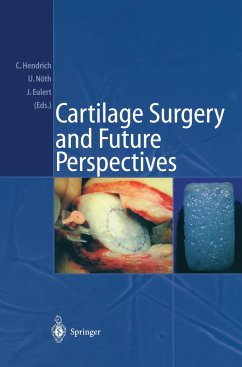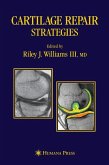The reconstruction of articular cartilage defects is still one of the major challenges for the orthopaedic surgeon. A variety of surgical techniques such as microfracturing, transplantation of osteochondral grafts and the autologous chondrocyte transplantation have been developed over the last decades. Recent progress in material science and cell and tissue engineering has led to a worldwide increasing number of scientists working on cell-based articular cartilage repair strategies. In a workshop symposium held in Würzburg, Germany, in November 2002, leading scientists from biomedical engineering, basic science and specialized surgeons discussed the state of the art in "Cartilage Surgery and Future Perspectives".
Tissue engineering as a technology and as a therapeutic has captured worldwide attention and commitmentbecause it has such potential in the care of humanity. Because we are not as yet able to craft robust three dimensional vascular and ductal structures to support the development of complex parenchymal organs, the initial focus of the field has been on thin tissues that can be nourished by diffusion alone.The best example of this class is cartilage. Thought by some to be a relatively simple tissue in the early days of tissue engineering, deep study of this tissue has shown it to manifest great complexity.Yearsof experimental and clinical effort have begun to untangle the clues that will allow us to reproducibly characterize, gener ate and clinically apply engineered cartilage with positive effects.World wide researchers and clinicians are intently focused on this goal and it has come time to step back and make a good assessment of our progress.
Hinweis: Dieser Artikel kann nur an eine deutsche Lieferadresse ausgeliefert werden.
Tissue engineering as a technology and as a therapeutic has captured worldwide attention and commitmentbecause it has such potential in the care of humanity. Because we are not as yet able to craft robust three dimensional vascular and ductal structures to support the development of complex parenchymal organs, the initial focus of the field has been on thin tissues that can be nourished by diffusion alone.The best example of this class is cartilage. Thought by some to be a relatively simple tissue in the early days of tissue engineering, deep study of this tissue has shown it to manifest great complexity.Yearsof experimental and clinical effort have begun to untangle the clues that will allow us to reproducibly characterize, gener ate and clinically apply engineered cartilage with positive effects.World wide researchers and clinicians are intently focused on this goal and it has come time to step back and make a good assessment of our progress.
Hinweis: Dieser Artikel kann nur an eine deutsche Lieferadresse ausgeliefert werden.








